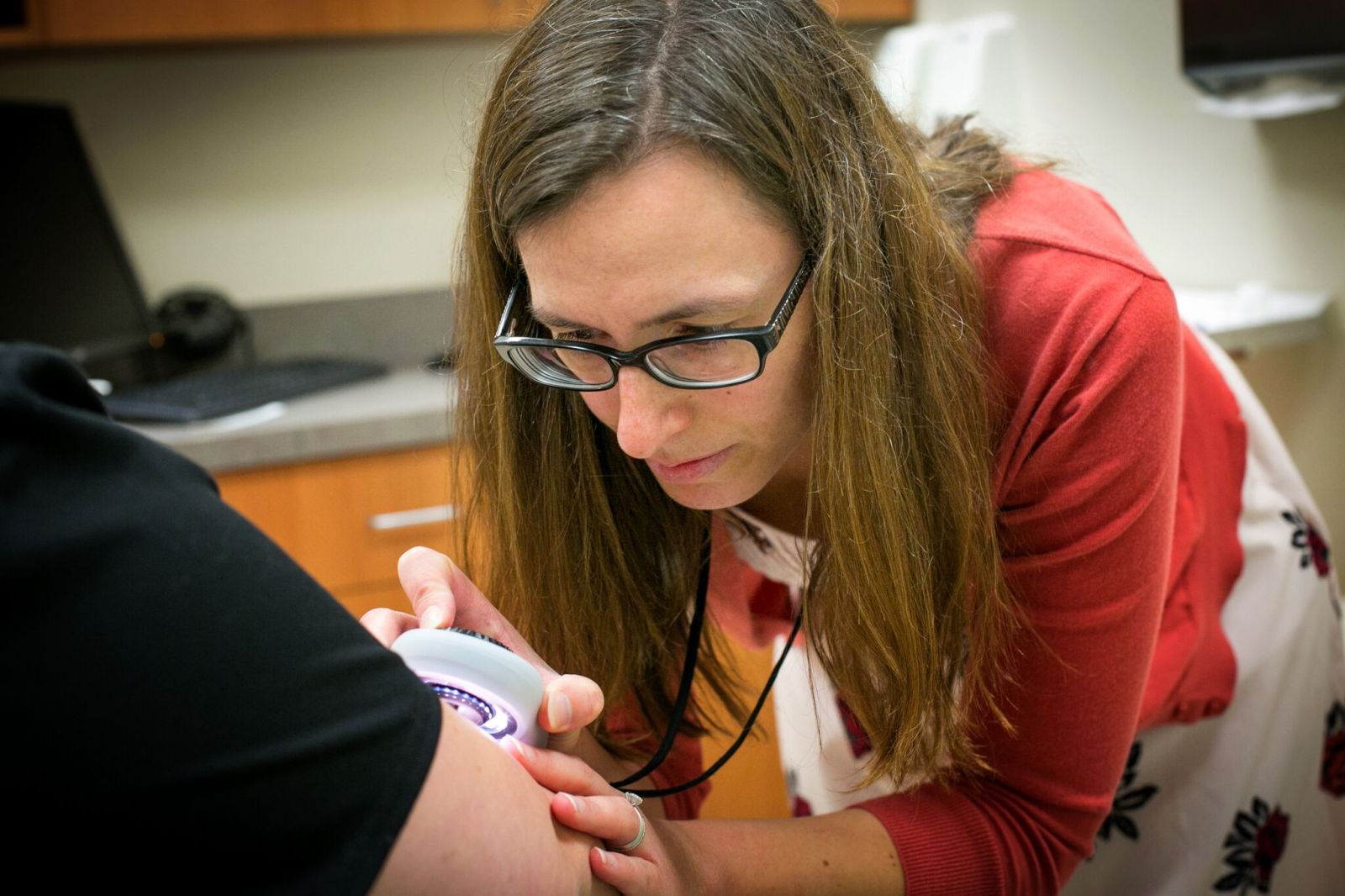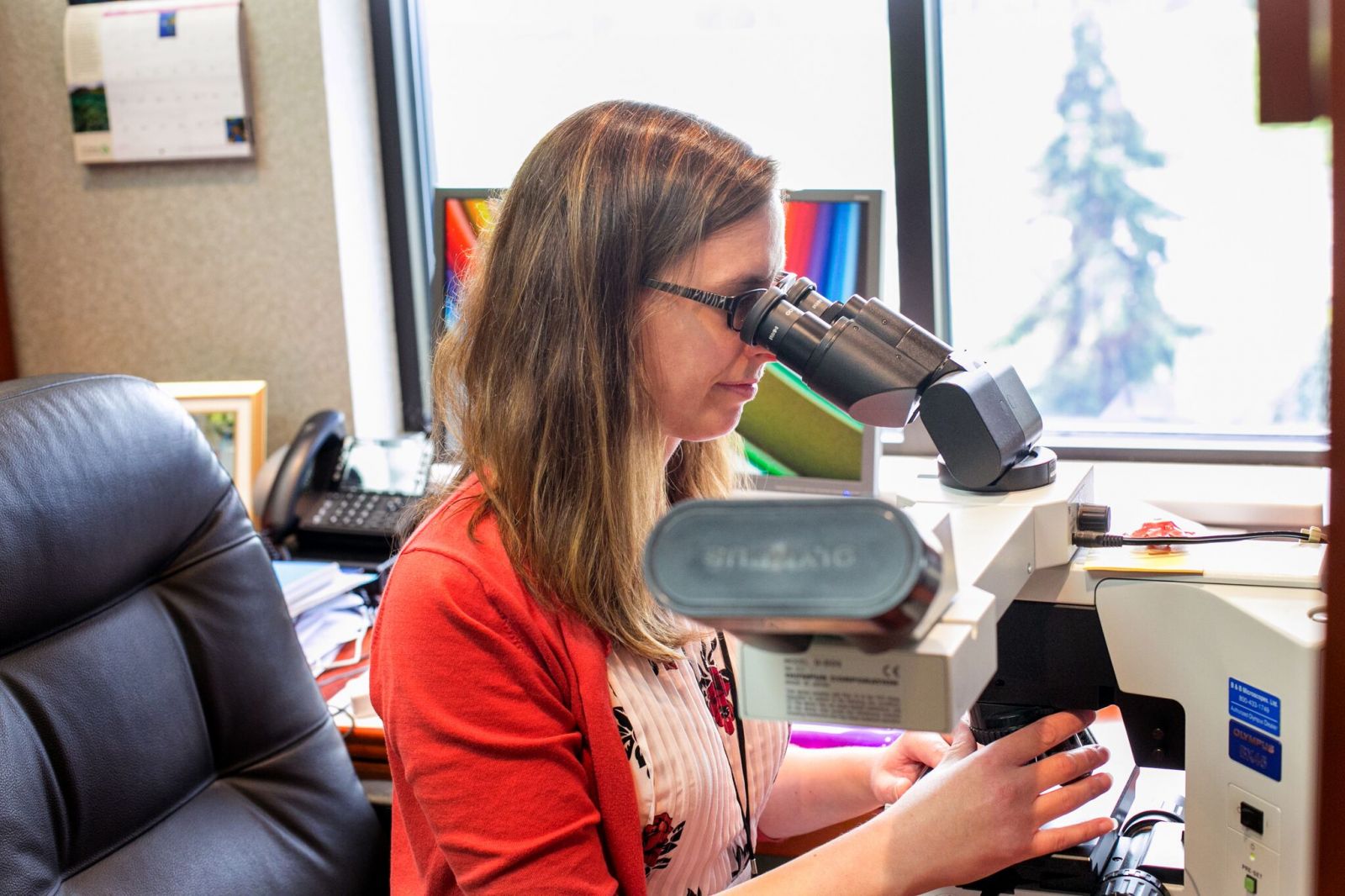Complete Skin Examination
What to expect during a complete skin examination:
As your provider performs the exam, they will use a hand-held dermatoscope, which is a specialized device used to magnify and illuminate the various layer of the skin. They will also dictate their findings to a medical assistant who makes sure everything is documented in your electronic medical record. Dermatologists spend three years after medical school focused on identifying concerning moles, so they are quite expert at discerning which ones need attention.
When your dermatologist comes to a spot that you are worried about, the provider suggests pointing it out so that any concerns that you may have can be addressed.
If you have a lot of suspicious moles, the doctor may want to document them with a photograph. The photograph is securely stored in your medical chart so that the size and nature of any moles can be compared at future visits.
As the doctor is performing the exam they might identify an area that needs treatment. After discussing the diagnosis and treatment with you, they will generally take care of the minor procedures at the appointment. The two most common treatments are:
- Cryotherapy – A spray of liquid nitrogen is used to remove lesions that sit on the surface of the skin (for example, precancerous actinic keratosis).
- Skin biopsy – A small sample of a suspicious lesion is removed under local anesthetic. It is then sent to a lab to be examined under a microscope to determine if further treatment is needed.


